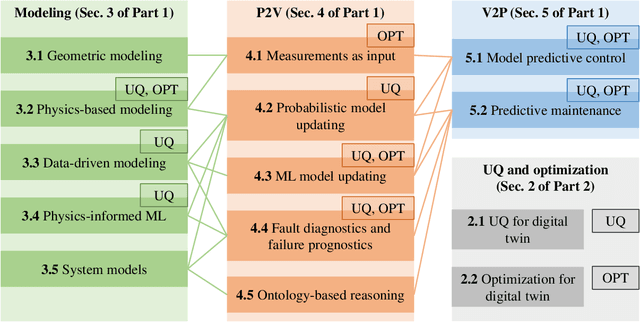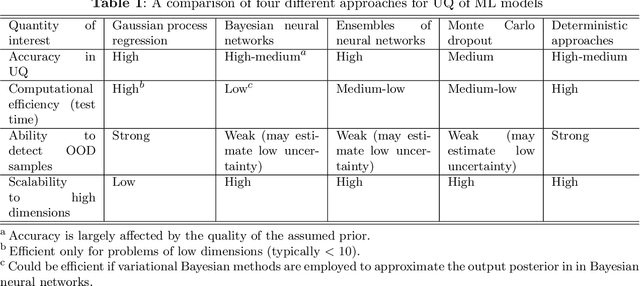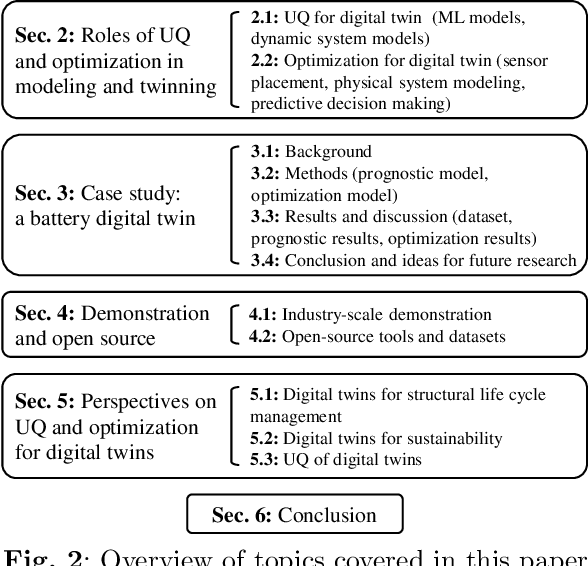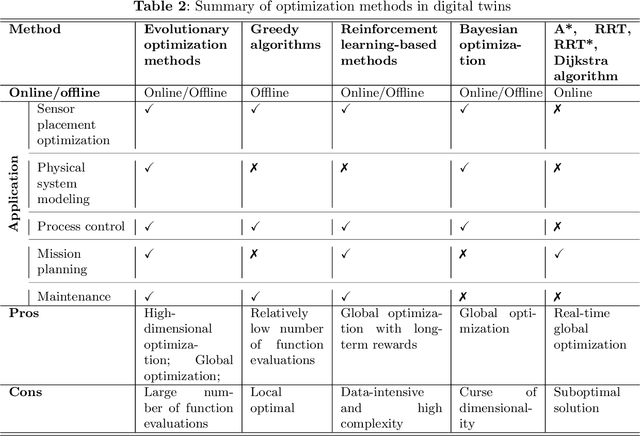A Comprehensive Review of Digital Twin -- Part 2: Roles of Uncertainty Quantification and Optimization, a Battery Digital Twin, and Perspectives
Paper and Code
Aug 27, 2022



As an emerging technology in the era of Industry 4.0, digital twin is gaining unprecedented attention because of its promise to further optimize process design, quality control, health monitoring, decision and policy making, and more, by comprehensively modeling the physical world as a group of interconnected digital models. In a two-part series of papers, we examine the fundamental role of different modeling techniques, twinning enabling technologies, and uncertainty quantification and optimization methods commonly used in digital twins. This second paper presents a literature review of key enabling technologies of digital twins, with an emphasis on uncertainty quantification, optimization methods, open source datasets and tools, major findings, challenges, and future directions. Discussions focus on current methods of uncertainty quantification and optimization and how they are applied in different dimensions of a digital twin. Additionally, this paper presents a case study where a battery digital twin is constructed and tested to illustrate some of the modeling and twinning methods reviewed in this two-part review. Code and preprocessed data for generating all the results and figures presented in the case study are available on GitHub.
 Add to Chrome
Add to Chrome Add to Firefox
Add to Firefox Add to Edge
Add to Edge